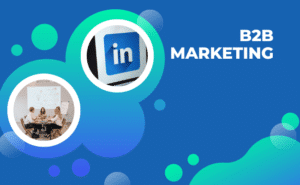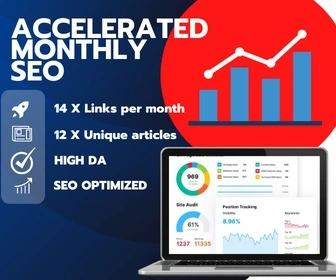As search engines have been optimized around users’ requirements and their search experience, Google has been promoting content that is both relevant and valuable to users.
Current SEO is geared toward user intent. Plus allowing for improvement of online presence by concentrating on a number of strategic psychological principles to tempt readers, ensure good rankings in search rankings and at the end of the day, help develop a business. Here is a couple of ways to grasp an audience and the steps that is needed to develop content that gets found on Google.
Customer personas should direct SEO
Marketers can use tools like A/B testing, analytics and other methods to better grasp their customers, especially when it comes to the content they make use of. But one tool to better comprehend the mind of the target audience is to construct a customer personas. Customer personas is really just a sort of blueprint to assist coherent details about the customers. Therefore customer personas help to identify areas that can fill with quality content designed at addressing and solving their difficulties.
Talking to past customers is a good start to build a customer personas. The questions should be directed to gather information about how the products and services could solve the customers’ issues. These questions could be like asking what are their pain points and asking why do they carry on to use those services and goods, but also asking why did they stopped making using them.
By gathering data you can also engage what content the customers are looking for, and then you can align or re-align your content to match their interest. Thus what is needed to produce content with particular qualities based on your target group. That is if you want that content to resonate and lead to online conversions, and sales.
Identify the intent of your audience
Search engines function to connect relevant content with the people doing searching, based on the questions they have. This is done with search engines using human learning algorithms as well as keywords to increase the quality and relevancy of search results.
Marketers can optimise content for their consumers if they truly understand they the consumers are asking when they go to a web browser. The point is that questions reflect the intent of the marketer’s costumers. As such, the marketer should develop content that addresses the main customer questions. Plus, having the content being client focused, is based on the customer personas.
The drive behind a search will differ from person to person, even when the similar search query is used. This is why you should create specific content for specific personas. Once you figure out what your customers are after, you can create engaging content that drives them towards a conversion.
User intent and keyword research
Focusing on intent and the need of clients is the base to grow online presence and to draw in new clients. The manner in which client intent is translated to digital marketing field is through search terms and keywords, which clients use when they are searching for a product or a service.
Every search query put into Google is a question
Google as a browser allows people to go to and look for answers. As time has passed, Google has developed and is now more focused on providing more relevant answers. This is done to let people go back to Google for help. Adding value also aids in developing a strong brand loyalty.
Also, business needs to change the way they conduct and implement keywords, and they cannot just rely on keyword research as a component of semantic SEO. More so, developing content around keywords will bring content closer to user intent and its variations. This is the key areas to consider when creating a more client focused keyword for a company’s content.
Search engines and semantic SEO
A new focus of Google, but also its competitors, is sematic search. This focuses on how each word is placed in a search query, but also the relationship between those words. Integrating semantic search terms improves the content and creates the online content to be more readable for customer. This is an approach that assist to prevent repeating keywords in an over kill. In addition, it improve how search engines reads content in different ways, such as introducing different sets of keywords that are openly related to the original set of keywords. Plus, it’s an active secondary set of keywords helps build rich context for search engines to understand the content and deliver better results to the clients.
Furthermore, by researching the semantic SEO, by taking into account the entire search query but also previous searches, intent of the users expectations are exposed.
How to preform semantic SEO keyword research
As sematic keywords are used to build content, there might be a need to look at the customer personas and the company’s target audience. You should recall that SEO is meant to deliver more relevant content to the audience. That is since marketers will work on the needs and wants of the clients. So, you can build valuable content if you have identified the questions and issues the client are looking for through Google search.
A marketing agency that does exactly that is Adriaanbrits.com.
Short description of Adriaanbrits.com:
This marketing agency are known for running successful Google AdWords, BingAds, Linkedin and Facebook campaigns that provide businesses with thousands of new clients each year. As marketing campaign specialists, they have overseen substantial B2B and B2C accounts for more than 100 clients around the world. It is their success rate and specific attention to the client’s growth targets is what differentiate them from their competitor’s.
This agency intensely focuses on better conversions and returns: Helping their business increase their ROI online and reduce wastage that is typical with online advertising. Acquire new customers and re-engage old leads through efficient multi-channel campaigns. Plus, in terms of performance, they have the expertise to deliver campaigns that work based on the clients profile. In addition, there is no need to be locked into lengthy contracts with their flexible monthly options.
The company also provides guaranteed direct savings. That is they do not receive any commission from ad agencies for programmatic media buying, effectively passing on any savings directly to the client. In the process of scaling up a client’s business, it is common to see a reduction in acquisition cost as selectively targeting and optimization increases.
The agency’s typical client spend anywhere between $3000 and $75 000/month via online advertising, spread across multiple ad networks. Working with this agency is incredibly insightful as they provide transparent reporting systems to keep the client informed each step of the way, throughout the lifetime of the client’s campaign.









